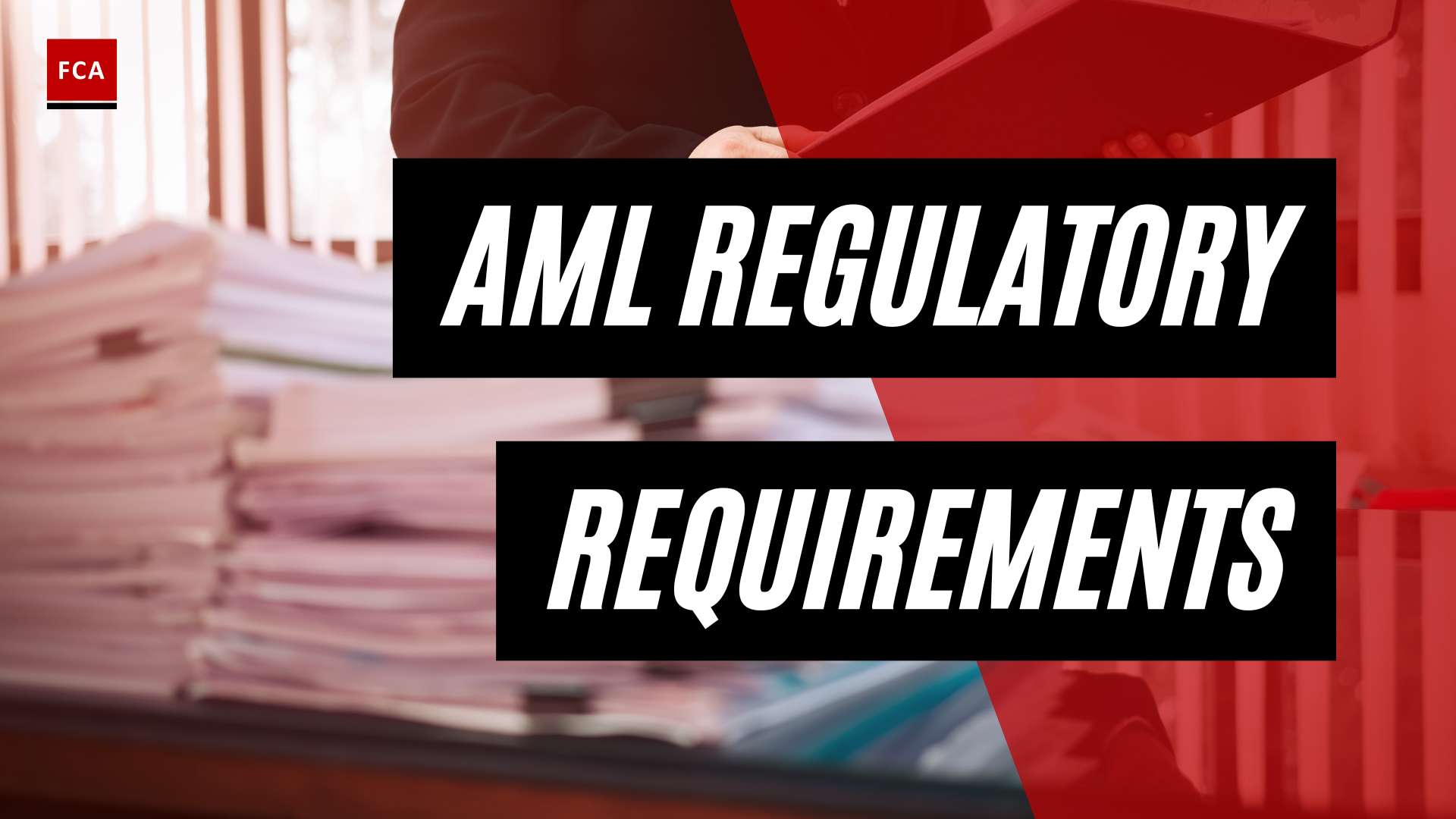Understanding Trade-Based Money Laundering
Trade-Based Money Laundering (TBML) is a sophisticated method used by criminals to disguise the proceeds of crime and legitimize their illicit origins through trade transactions. It involves exploiting the trade system to move and hide money, making it challenging to detect and trace the illicit funds. Criminal organizations and terrorists often utilize TBML to evade government scrutiny, bypass capital controls, and obscure the source of their funds.
What is Trade-Based Money Laundering?
Trade-Based Money Laundering is a process where criminals manipulate trade transactions to move and disguise the illicit proceeds. This method typically involves techniques such as over/under-invoicing, misrepresentation of goods, falsification of documents, and the use of shell companies to manipulate the value of goods and services. By exploiting the complexities of international trade, criminals can obscure the origins of illicit funds and integrate them into the legitimate financial system (Financial Crime Academy).
Criminals involved in TBML often create intricate trade networks and establish multiple companies to make tracing the illicit activities more challenging for authorities. These networks can span across different jurisdictions and involve various parties, making it difficult to distinguish between legitimate and illicit activities (Financial Crime Academy).
Importance of Combatting Trade-Based Money Laundering
Trade-Based Money Laundering poses a significant threat to the global financial system and the integrity of international trade. The Financial Action Task Force (FATF) estimates that criminal proceeds laundered through trade-based transactions account for 80-85% of all illicit financial flows. The vast scale of this illicit activity highlights the need for robust measures to combat TBML.
Efforts to combat TBML are crucial for several reasons. Firstly, TBML enables criminal organizations to finance illicit activities such as drug trafficking, arms smuggling, human trafficking, and terrorism. By disrupting the flow of illicit funds, authorities can enhance national security and public safety. Secondly, TBML undermines the integrity of the global trade system by distorting prices, evading taxes, and circumventing regulatory controls. By addressing TBML, governments can protect fair trade practices and ensure a level playing field for businesses. Lastly, tackling TBML helps preserve the integrity of the financial system and maintains public trust in financial institutions.
Preventing and detecting trade-based money laundering requires collaboration between financial institutions, regulatory authorities, and law enforcement agencies. By implementing robust Anti-Money Laundering (AML) policies and procedures, conducting thorough Know Your Customer (KYC) checks, and enhancing transaction monitoring systems, financial institutions can play a critical role in identifying and reporting suspicious trade-based activities. Additionally, close cooperation between financial institutions and financial intelligence units, as well as information sharing among stakeholders, can aid in the early detection and prevention of TBML.
By understanding the nature of trade-based money laundering and recognizing its impact, stakeholders can work together to develop effective countermeasures and protect the integrity of the financial system.
Techniques Used in Trade-Based Money Laundering
Trade-based money laundering (TBML) involves various techniques that criminals employ to disguise the proceeds of crime and move illicit funds through trade transactions in an attempt to legitimize their origins (FICO). Understanding these techniques is crucial for organizations to detect and prevent trade-based money laundering effectively. Two common techniques used in trade-based money laundering are the manipulation of trade transactions and the use of common trade-based money laundering schemes.
Manipulation of Trade Transactions
One of the primary techniques used in trade-based money laundering is the manipulation of trade transactions. Criminals exploit the trade system by engaging in activities such as over- and under-invoicing of goods and services, multiple invoicing, falsely described goods or services, and even phantom shipping. These techniques are aimed at manipulating the value of goods, creating discrepancies between the real value and the reported value, and generating false documentation to disguise the illicit origins of funds (FICO).
By over-invoicing or under-invoicing goods and services, criminals can overstate or understate the value of the trade transaction. This allows them to move funds across borders discreetly and manipulate the flow of money. Similarly, employing multiple invoices for a single trade transaction can further complicate the tracing of funds and obscure the true nature of the transaction. Falsely describing goods or services is another technique used to misrepresent the nature of the trade, making it harder to detect the illicit activities.
Common Trade-Based Money Laundering Schemes
Trade-based money laundering encompasses various schemes employed by criminals to facilitate illicit activities and launder money. One common scheme is the “Black Market Peso Exchange.” In this scheme, drug traffickers in the United States use proceeds from drug sales to purchase goods that are exported to other countries. These goods are then sold locally, and the proceeds effectively laundered. By utilizing legitimate trade channels, criminals can convert their illegal funds into seemingly legitimate assets.
Another scheme is the use of shell companies, which are entities created solely for the purpose of facilitating money laundering. Criminals establish multiple shell companies in different jurisdictions to create complex trade networks that make it challenging for authorities to trace illicit activities. Through these networks, criminals can manipulate trade transactions, create false invoices, and obscure the true beneficiaries of the funds, making detection and investigation more difficult.
It is crucial for organizations to stay vigilant and implement robust anti-money laundering (AML) measures to detect and prevent trade-based money laundering. By implementing transaction monitoring systems, conducting thorough due diligence on customers and counterparties, and establishing effective internal controls, organizations can enhance their ability to identify suspicious trade-based activities. Collaboration and information sharing between financial institutions, regulatory authorities, and financial intelligence units play a vital role in combating trade-based money laundering (AML policies and procedures).
The Scale and Impact of Trade-Based Money Laundering
Trade-based money laundering (TBML) has emerged as a significant challenge in the global fight against money laundering. Understanding the scale and impact of this illicit activity is crucial in developing effective countermeasures. In this section, we will explore the vulnerability of global trade to money laundering and highlight estimates provided by the Financial Action Task Force (FATF).
Global Trade and Its Vulnerability to Money Laundering
The value of global trade is estimated to be around USD 18 trillion annually, making it an attractive avenue for illicit activities such as trade-based money laundering (TBML). Trade transactions involve complex supply chains, numerous intermediaries, and vast volumes of financial transactions. These factors create opportunities for criminals to exploit gaps and manipulate trade transactions to launder illicit funds.
Approximately 80% to 85% of global trade moves with some form of credit, making the trade finance process susceptible to abuse by money launderers. Criminals utilize various techniques to disguise the illicit origin of funds, including over- and under-invoicing, multiple invoicing, and false description of goods (FATF). These schemes have become increasingly complex, involving multiple jurisdictions to further obfuscate the origin and ownership of the illicit funds.
Trade-based money laundering poses significant challenges for law enforcement agencies and financial institutions due to its complex nature, the involvement of legitimate businesses, and the use of international trade networks to facilitate illicit financial flows. Detecting and preventing TBML requires robust systems and processes to identify suspicious trade activities and mitigate the risks associated with international trade finance.
Financial Action Task Force (FATF) Estimates
The Financial Action Task Force (FATF) estimates that criminal proceeds laundered through trade-based transactions account for 80-85% of all illicit financial flows. These staggering figures highlight the significant role that trade-based money laundering plays in facilitating and perpetuating other criminal activities such as drug trafficking, terrorism financing, and corruption.
To address the growing threat of TBML, international organizations, financial institutions, and regulatory authorities are working together to enhance their understanding of TBML schemes and develop effective preventive measures. By strengthening risk assessments, improving regulatory frameworks, and promoting information sharing, stakeholders aim to disrupt the flow of illicit funds through trade channels and safeguard the integrity of the global financial system.
In the next section, we will explore the red flags and detection techniques that can help identify suspicious trade-based activities and enhance monitoring systems to combat trade-based money laundering effectively.
Red Flags and Detection of Trade-Based Money Laundering
Detecting and preventing trade-based money laundering (TBML) requires a keen understanding of the indicators of suspicious activities and the implementation of robust detection and monitoring systems. By identifying red flags and enhancing detection methods, financial institutions and regulatory authorities can effectively combat this form of money laundering.
Indicators of Suspicious Trade-Based Activities
Trade-based money laundering often involves the misrepresentation of the price, quantity, or quality of imports or exports. To identify potential TBML activities, it is important to be aware of the following red flags:
- Over-invoicing or under-invoicing: Unusual variations in the prices declared on invoices can indicate attempts to manipulate trade transactions and disguise the movement of illicit funds.
- Mismatching shipment documentation: Inconsistencies between the descriptions of goods in shipping documents and their actual contents may suggest attempts to deceive authorities.
- Frequent amendments to shipment terms: Frequent changes to shipment details, such as the destination, consignee, or value, could be a sign of illicit activity.
- Use of free trade zones: Criminals may exploit free trade zones to obscure the origin of goods and facilitate money laundering.
These are just a few examples of the red flags that may indicate potential trade-based money laundering. It is crucial for financial institutions and authorities to remain vigilant, continuously update their knowledge of evolving TBML techniques, and implement effective detection mechanisms.
Enhancing Detection and Monitoring Systems
To effectively detect and prevent trade-based money laundering, financial institutions and regulatory authorities must employ advanced technologies and strategies. Some key measures include:
- Transaction monitoring systems: Implementing sophisticated transaction monitoring systems can help identify suspicious patterns and flag potentially illicit activities. These systems can analyze vast amounts of data, including trade transactions and related financial flows, to detect anomalies and potential indicators of TBML.
- Collaboration and information sharing: Enhancing collaboration between financial institutions and regulatory authorities, as well as international cooperation through platforms such as financial intelligence units, is crucial in combating TBML. Sharing intelligence, best practices, and information on emerging TBML trends can strengthen the collective ability to detect and prevent money laundering.
- Robust Know Your Customer (KYC) procedures: Implementing comprehensive customer identification programs and conducting thorough due diligence on customers and counterparties can help identify high-risk entities and transactions. This includes screening for politically exposed persons (PEPs) and conducting enhanced due diligence on transactions involving countries of higher risk.
- Data analytics and artificial intelligence: Utilizing advanced analytics and artificial intelligence can enhance the detection capabilities of financial institutions. These technologies can analyze vast amounts of data, identify patterns, and generate alerts for potential TBML activities.
By implementing these preventive measures and continuously improving detection systems, financial institutions and regulatory authorities can stay ahead in the fight against trade-based money laundering. It is crucial to remain proactive, adapt to evolving TBML techniques, and collaborate across borders to effectively combat this global financial threat.
Preventive Measures and Compliance
To effectively combat trade-based money laundering, financial institutions and regulatory authorities must implement preventive measures and ensure compliance with anti-money laundering (AML) regulations. Two key aspects of this process are robust Know Your Customer (KYC) procedures and collaboration and information sharing.
Robust Know Your Customer (KYC) Procedures
KYC procedures play a crucial role in preventing trade-based money laundering. Financial institutions must establish robust KYC processes to verify the identity of their customers and assess the potential risks associated with their activities. These procedures involve obtaining and verifying relevant information, such as identification documents, proof of address, and the nature of the customer’s business or occupation.
By conducting thorough due diligence on customers, financial institutions can identify any potential red flags or suspicious activities. This helps in the early detection and prevention of trade-based money laundering schemes. KYC procedures are also essential for complying with regulatory requirements, such as customer identification programs and suspicious transaction reporting.
To enhance the effectiveness of KYC procedures, financial institutions can leverage advanced technologies, such as artificial intelligence and machine learning, to automate the process and identify patterns and anomalies. This allows for more efficient and accurate risk assessments, improving the overall effectiveness of AML efforts.
Collaboration and Information Sharing
Given the cross-border nature of trade-based money laundering, international cooperation and information sharing are vital for combating this illicit activity. Financial institutions need to collaborate with each other, regulatory authorities, and financial intelligence units to share intelligence, best practices, and typologies related to trade-based money laundering.
By sharing information and collaborating, financial institutions and regulatory authorities can collectively identify emerging trends, schemes, and high-risk jurisdictions. This collaborative approach helps in developing effective countermeasures, enhancing detection capabilities, and staying ahead of evolving money laundering techniques.
Financial institutions should also participate in industry forums, working groups, and public-private partnerships focused on AML efforts. These collaborative initiatives facilitate the exchange of knowledge and expertise among various stakeholders, enabling them to collectively address the challenges posed by trade-based money laundering.
Additionally, financial institutions should leverage technology solutions, such as sanctions screening and transaction monitoring systems, to detect and report suspicious activities effectively. These systems can help identify unusual patterns, discrepancies, and transactions involving high-risk jurisdictions or politically exposed persons.
By implementing robust KYC procedures and fostering collaboration and information sharing, financial institutions and regulatory authorities can strengthen their defenses against trade-based money laundering. These preventive measures, along with AML policies and procedures, contribute to a more resilient financial system and protect businesses from the risks associated with illicit financial flows.
The Role of Financial Institutions and Authorities
In the fight against trade-based money laundering, financial institutions and regulatory authorities play critical roles in implementing preventive measures and ensuring compliance with anti-money laundering regulations. By taking on specific responsibilities and fostering cooperation, they contribute to the overall effort of safeguarding the integrity of the financial system.
Responsibilities of Financial Institutions
Financial institutions bear the responsibility of implementing robust measures to prevent trade-based money laundering. This includes adhering to rigorous Know Your Customer (KYC) procedures to verify the identities of their customers and assess their risk profiles. By conducting thorough due diligence, financial institutions can identify and mitigate the potential risks associated with trade transactions (Public Safety Canada).
Transaction monitoring is another crucial aspect of financial institutions’ role in combatting trade-based money laundering. By employing advanced analytics and transaction monitoring systems, institutions can detect suspicious patterns, identify unusual activities, and promptly report them to the appropriate authorities. This helps in the timely prevention and investigation of potential money laundering activities.
Financial institutions also play a vital role in sharing intelligence and collaborating with regulatory authorities and other institutions. This collaboration enhances information sharing, facilitates the identification of emerging trends, and promotes the exchange of best practices in combating trade-based money laundering. By working together, financial institutions and authorities can strengthen their collective efforts in preventing illicit activities.
Cooperation between Financial Institutions and Regulatory Authorities
Trade-based money laundering is a global issue that requires international cooperation. Financial institutions and regulatory authorities must work hand in hand to combat this form of money laundering effectively. The cross-border nature of these illicit schemes necessitates cooperation and information sharing on a global scale.
Financial institutions should collaborate with regulatory authorities, such as financial intelligence units, to share intelligence and assist in investigations related to trade-based money laundering. This collaboration helps identify suspicious activities, track illicit funds, and bring the perpetrators to justice.
Regulatory authorities also play a crucial role in setting and enforcing regulations to prevent trade-based money laundering. They establish guidelines, monitor compliance, and provide guidance to financial institutions regarding AML policies and procedures. Through regular assessments and examinations, regulatory authorities ensure that financial institutions are effectively implementing preventive measures and fulfilling their obligations.
By fostering cooperation, financial institutions and regulatory authorities can create a united front against trade-based money laundering. Through information sharing, joint investigations, and the consistent enforcement of regulations, they can significantly reduce the occurrence and impact of illicit trade-related activities.
In conclusion, financial institutions and regulatory authorities have distinct responsibilities in the fight against trade-based money laundering. Financial institutions must implement robust KYC procedures, monitor transactions, and report suspicious activities. Regulatory authorities, on the other hand, set and enforce regulations, provide guidance, and collaborate with financial institutions. By working together, they can effectively combat trade-based money laundering and protect the integrity of the financial system.








